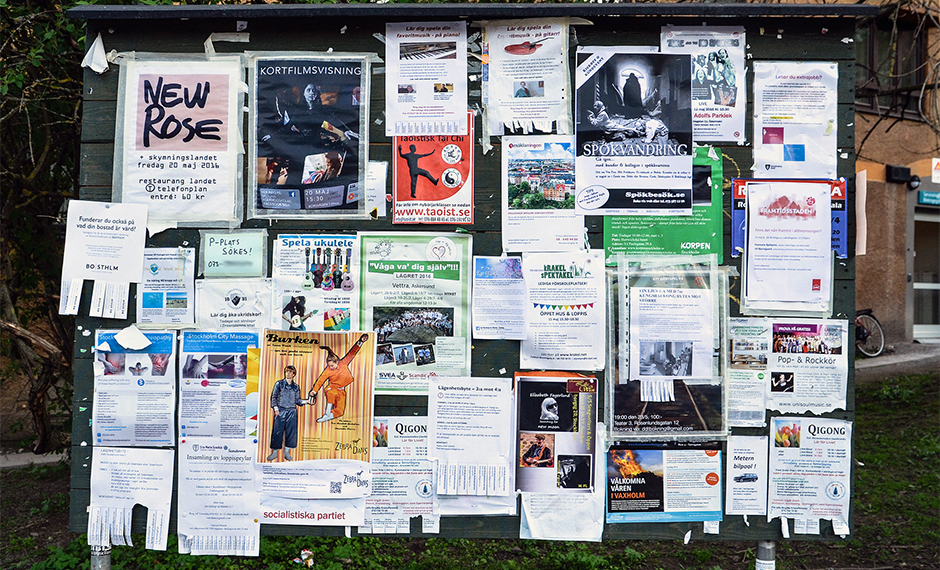Press release 29 May 2015
They can be found outside the supermarket, at the bus stop, at the swimming pool: public notice boards, covered in handwritten notes, messages and posters. But what is the function of the physical notice board in the digital age? Who is saying what? And why? Scientists are now seeking the help of school pupils to map the contents of public notice boards around Sweden.
“No one has previously analysed Swedish notice boards in this way. It is also the first so-called ‘citizen science’ project to be run in Sweden in the humanities field, in which pupils will be actively helping scientists,” says Christopher Kullenberg, who researches citizen science at the University of Gothenburg.
The scientists, in particular, want to investigate what needs public notice boards fulfil in today’s society, the type of information that is conveyed, and how text and images are used for different kinds of messages. During the last two weeks of September, the pupils’ task will be to photograph a notice board, write down all the information that is on the notice board and send the photographs and text to the scientists. They will also be asked to translate any notices not written in Swedish, as one of the research questions is about how different languages are used on notice boards.
“We are interested to find out whether multiple languages are used in notices, how different languages are used for different types of notices and any differences that exist between different parts of the country. Students with multiple language skills will therefore have an important role in translating notices in other languages into Swedish,” says Johan Järlehed, a language researcher at the University of Gothenburg.
The mass experiment is part of ForskarFredag – the Swedish events during the science festival European Researchers’ Night, which is held all around Europe on the last Friday of September each year. Its aim is to arouse curiosity in research, to show how exciting research can be and to provide an insight into what it involves. Teachers can find out more and register their classes to participate via the ForskarFredag website, www.forskarfredag.se.
“By participating in the mass experiment, pupils get a chance to try out real research in collaboration with scientists. For the scientists, it provides a unique opportunity to collate large amounts of data from across the country,” says Lena Söderström, a Project Manager at VA (Public & Science), who coordinates Researchers’ Night in Sweden.
This year, ForskarFredag (Researchers’ Friday) will be celebrated on 30 September in Blekinge, Borås, Dalarna, Eskilstuna, Falköping, Gothenburg, Gävle, Halland, Jönköping, Karlstad, Lidköping, Linkoping, Lund, Malmö, Norrköping, Piteå, Skellefteå, Skillingaryd, Skövde, Stenstorp, Stenungsund, Sweden, Stockholm, Södertälje, Trollhättan, Uppsala, Umeå, Västerås and Växjö, Öland and Örnsköldsvik.
This European Researchers’ Night project is funded by the European Commission under the Marie Sklodowska-Curie actions.


